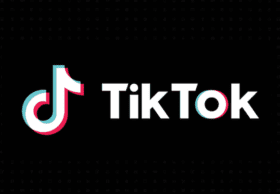 Big breakthroughs in media will be a hot topic at Cynopsis’ That Big TV Conference in September, and David Kulczar, Senior Product Manager of IBM Watson Media Analytics, will be key to the conversation. Kulczar shares his vision (“today’s viewers are the real showrunners”) of what promises to be a robust discussion. (To register for the event, go here).
Big breakthroughs in media will be a hot topic at Cynopsis’ That Big TV Conference in September, and David Kulczar, Senior Product Manager of IBM Watson Media Analytics, will be key to the conversation. Kulczar shares his vision (“today’s viewers are the real showrunners”) of what promises to be a robust discussion. (To register for the event, go here).
What are the three most important recent breakthroughs in the media business?
When it comes to innovation in the media business, the three most important recent breakthroughs are: the proliferation of esports as a driver of technology innovation, specifically as it pertains to full engagement of viewers and players; AR/VR for immersive entertainment, as it continues gaining wider acceptance and is finally starting to be used in ways that are not just novel, but truly useful and interesting; and AI for personalization, where we are rapidly approaching the ability for media consumers to attain a truly tailored entertainment experience.
Esports has become one of the media industry’s most impactful game-changers, mostly due to tremendous viewership growth, the immediate nature of participation and communication in these environments, and new revenue models that esports is starting to drive. The questions are around how we can maintain fairness in esports, make it more accessible to people of all ages, and help drive additional revenue in a space with such a rabid, yet often fickle following.
AR and VR have reshaped our ability to immerse ourselves inside the entertainment world, blurring the line between viewer and participant, and enabling consumers to experience media more intimately than ever before. The real issue with this space is that it is still often seen as a novelty item. The next phase will be finding true experiences that are engaging, fulfilling, and drive people to a technology that can often be seen as campy or not ready for primetime.
Lastly, AI is now deeply embedded in enhancing and personalizing the way content reaches consumers – it provides granular insight into video data and identifies the exact elements within a video that are most engaging to viewers, empowering publishers to recommend highly relevant content and create the most personalized viewer experiences to date. How do we give viewers what they want and are interested in, while still enabling them to find that diamond in the rough that they may not know they want?
How big a part will AI play in the future of media?
The future of media will see publishers of all sizes, from national broadcasters to local news stations, unlocking AI’s full potential and leveraging data-driven insights to enhance monetization opportunities and consumer experiences. As AI grows smarter and more sophisticated, however, its implementation requires larger amounts of training. This process is costly and time-intensive, yet necessary to ensure the technology analyzes and structures data to the best of its ability. The commitment to training AI will become a media industry standard found across the entire landscape, transforming both production for media companies and consumer experiences. Ultimately, the future of AI is similar to the future of most every new technology, which in short is improvement, commoditization, and democratization. How do we make it better, cheaper and get it into the hands of more people?
What’s your forecast for the media world 10 years from now?
In the next decade, we’ll enter an era of hyper-personalization and new ways to engage with media. The media and entertainment industry is going to look different for every single viewer. We know that today’s viewers are the real showrunners when it comes to setting expectations for media trends. While industry experts will continue to race to provide the right content and platforms, advancements in smart devices, voice technology, as well as the widespread adoption of AI, will ensure that no two viewing experiences will be the same and will begin to blur the lines between viewer and creator.
I see a near future where viewers have an AI-powered concierge to manage personalized, participatory viewer experiences. Plus, with the growing amount of individual data media brands can use to inform recommendations, we’ll see recommendations informed by everything from the current weather to viewers’ emotions and interests – as told by social media. Imagine asking your TV, “What should I watch right now?” and it deducing that, while a romantic comedy is a great for a rainy day, you don’t want to watch any because of a recent breakup! Then, add the ability to dynamically control the outcome of content or to influence what a content creator might create, or even power an experience where content is auto-created for me based on my needs or desires, building a true “audience of one” experience.






